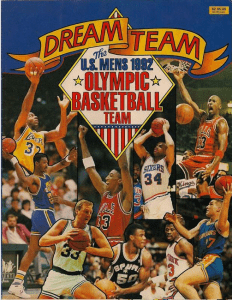When you see someone in danger, do you react? Do you stand there and watch? Or do you step in and intervene? It’s a hard decision, especially when you analyze the situation. On March 13th, 1964, some individuals made that choice. Their choices would later haunt them. Winston Moseley murdered and assaulted Kitty Genovese in the middle of the street, and no one did a thing. Why? Whose fault was it? Are they to blame too?

Kitty Genovese was twenty-eight years old and the manager of a local bar. The small apartment on Austin Street she shared with her girlfriend was home. The area where she lived wasn’t terrible. There were a couple of noisy bars on the street but usually, no one paid much attention. This was a normal neighborhood, where everyone knew each other.1 Her neighbors were friendly and crime was low. Of course, Kitty loved the city. Her Italian-American parents left New York due to urban crime, but Kitty refused. Kew Gardens, Queens was safe.2 Regardless of where she was, Kitty was the type of person everyone liked. Angelo Lanzone, one of her friends, would later say, “Kitty was attractive but there was more to her than looks, Kitty had charm.”3 She was friends with everyone, even with that odd neighbor, Karl Ross. He was quite strange, a bit quiet, but Kitty didn’t care. Kitty was nice to everyone. She had a friendly face. That’s what made her a great employee, and what was launching her career forward. She planned on opening her own Italian restaurant. 4 Kitty stood out from the crowd. Her charisma and kindness made her approachable. Nobody could miss her.

Winston Moseley worked as a machine operator in a town north of the Bronx. He was only twenty-nine years old but had already married twice. His childhood was rough after his mother walked out on him and his father, but life continued. His second wife Betty sometimes worried about his moods, but they had a normal marriage. Still, he was bitter, and he was angry. He felt that he had to work twice as hard as other workers, and Moseley didn’t feel as though he was someone’s equal. At times, he felt like he wasn’t standing out enough.5
At three in the morning, on March 13th, 1964, Kitty left her job and drove home. She parked and exited her car, like usual. As she got out, she noticed a figure near her. Kitty ran because she was near her apartment and close to safety. Later, when speaking to the court, Winston Moseley detailed the events of that night, “As she got out of the car, she saw me and ran. I ran after her and had a knife in my hand. I could run much faster than she could, and I jumped on her back and stabbed her several times.”6

When he struck, Kitty immediately cried out, as anyone would. She was loud enough to wake neighbors. “Oh my god, he stabbed me! Please help me!” she yelled. 7 At that moment, someone did react. Robert Mozer opened his window and shouted, “Leave that girl alone!”8 Moseley looked up at him, shrugged, and then he left. Although Mozer acted and managed to scare Moseley off, that was all that occurred. Kitty dragged herself into the nearest apartment in an attempt to find safety. She managed to make it to the back of the building to the door of her friend Karl Ross.
Moseley stayed in his car and waited until he realized no one would interfere any further. Then he returned to find Kitty. In his trial, he explained his reason for returning, “I’d not finished what I set out to do.”9
Karl Ross opened the door and saw Moseley on top of Kitty, but he closed the door. Ross had been drinking and was afraid. He believed that the attacker would harm him next, and he wasn’t willing to call the police out of fear. Ross assumed the questions would turn on him and his high level of alcohol. When he was under questioning, he said, “I didn’t want to get involved.”10 After he saw Kitty’s attack, he phoned another neighbor. Then he climbed out of his window and headed to another apartment. There, Ross called the police.11

Kitty Genovese’s story has resurfaced countless times, largely because of the significant number of witnesses. The New York Times reported a headline the day after the event that read, “37 Who Saw Murder Didn’t Call the Police.”12 Yet, the amount of witnesses varies from the police report. The report only listed six witnesses. There was outrage amongst the public. How could there be no interference from bystanders?13 Regardless of the misinformation; the facts remained. Kitty Genovese died, and no one provided immediate help or stepped in. In the end, the real question was, why did nobody help?

Altruism refers to unselfishness when it comes to the wellbeing of others. Social psychologists have analyzed the idea of an altruistic paradox. This is the way some people will perform self-sacrificial acts to benefit others. It’s a paradox because it’s a contradiction of survival of the fittest. This changes the narrative of selfish humans.14Were Kitty’s neighbor’s lacking altruism?
The bystander effect arose from Kitty Genovese’s attack. When in a large setting with many people, the chances of someone taking action in an event decreases. The chances of single individuals offering help when alone are a lot higher than in groups. This is due to the diffusion of responsibility between people. Without realizing it, individuals rely on other people in a group. The mentality of “they will do something” seems to settle among the crowd. Individuals look to each other to act first. Also, situational forces can sometimes overpower individuals’ personal beliefs. At times, a situation may affect someone’s behavior, even though the drive to act is there. An individual may feel overpowered by an event, and not react the way they would expect. Still, studies show that one person’s action could lead to a whole group reacting. 15 Many people heard Kitty scream, but they believed they were people arguing. Some even reported they believed someone else must have already called the police.16
Police arrested Winston Moseley five days after the attack. He confessed to the sexual assault and murder of Kitty Genovese. Moseley also admitted to the murders of Barbara Kralik and Anna Mae Johnson. They were also young women, who Moseley claimed to have been “compelled to kill.”17 His trial occurred on June 8th, 1964. He received the death sentence but later received a life sentence, due to a plead of insanity. All his parole hearings were not approved. Moseley died at 81 years old on March 28th, 2016, as the oldest inmate in his prison.18
Kitty Genovese’s attack lasted around 33 minutes. It occurred between 3:19 and 3:52 AM. To her, it probably would have felt an eternity.19 The retelling of her story still continues and her name lives on, although she didn’t. Kitty’s murder is in many places, textbooks, documentaries, and more. It’s become a myth, rather than the life of a young woman, who had begun to live. Kitty Genovese would have celebrated her 84th birthday in 2019.
It’s after midnight; the sun hasn’t risen yet. You’re in bed, already asleep. You hear a scream, someone is begging for help. You wake and look outside your window. A man is stabbing a woman, right below your apartment window. You’re scared, he’s armed. Has someone else already called the police? Someone else will go help her. Do you go anyways? It might not be so easy. Or is it? How do you know? What would you do?
- A.M. Rosenthal, Thirty-Eight Witnesses: The Kitty Genovese Case (New York: McGraw-Hill, 1964), 22. ↵
- Kevin Cook, Kitty Genovese : the murder, the bystanders, the crime that changed America (New York: W. W. Norton & Company, 2014), 27-30. ↵
- Kevin Cook, Kitty Genovese : the murder, the bystanders, the crime that changed America (New York: W. W. Norton & Company, 2014), 7. ↵
- Kevin Cook, Kitty Genovese : the murder, the bystanders, the crime that changed America (New York: W. W. Norton & Company, 2014), 56. ↵
- Kevin Cook, Kitty Genovese : the murder, the bystanders, the crime that changed America (New York: W. W. Norton & Company, 2014), 74. ↵
- Percy Smith, “Silent witness,” Safety & Health Practitioner 30, no. 5 (2012): 43. ↵
- A.M. Rosenthal, Thirty-Eight Witnesses: The Kitty Genovese Case (New York: McGraw-Hill, 1964), 23. ↵
- A.M. Rosenthal, Thirty-Eight Witnesses: The Kitty Genovese Case (New York: McGraw-Hill, 1964), 23. ↵
- Saul M. Kassin, “The Killing of Kitty Genovese: What Else Does This Case Tell Us?,” Perspectives on Psychological Science 12, no. 3 (2017): 375. ↵
- Kevin Cook, Kitty Genovese: the murder, the bystanders, the crime that changed America (New York: W. W. Norton & Company, 2014), 109. ↵
- Kevin Cook, Kitty Genovese: the murder, the bystanders, the crime that changed America (New York: W. W. Norton & Company, 2014), 112. ↵
- Arthur J. Lurigio, “Crime Narratives, Dramatizations, and the Legacy of the Kitty Genovese Murder: A Half Century of Half Truths,” Criminal Justice and Behavior 42, no. 7 (July 2015): 783. ↵
- Salem Press Encyclopedia, 2018, s.v. “Kitty Genovese Dies as Her Cries for Help Are Ignored,” by Leigh Husband Kimmel. ↵
- Salem Press Encyclopedia, 2018, s.v. “Altruism, cooperation, and empathy,” by Jim Fultz and Elizabeth Schafer. ↵
- Salem Press Encyclopedia, 2018, s.v. “Bystander intervention and social psychology,” by Steve Nida. ↵
- Salem Press Encyclopedia, 2018, s.v. “Kitty Genovese Dies as Her Cries for Help Are Ignored,” by Leigh Husband Kimmel. ↵
- Marcia M. Gallo, “The Parable of Kitty Genovese, the New York Times, and the Erasure of Lesbianism,” Journal of the History of Sexuality 23, no. 2 (2014): 283. ↵
- Salem Press Encyclopedia, 2018, s.v. “Kitty Genovese Dies as Her Cries for Help Are Ignored,” by Leigh Husband Kimmel. ↵
- Kevin Cook, Kitty Genovese : the murder, the bystanders, the crime that changed America (New York: W. W. Norton & Company, 2014), 3-4. ↵




75 comments
Pablo Ruiz
This article told a crazy story and was very informative. I have never heard of story/killing like this before. I could not imagine that people were around and witnessed what happened to Kitty Genovese and did not do more to help her. I have never heard of altruism but it makes sense that humans would follow this because of our empathetic nature. Its sad that those who witnessed what happened did not do more to help Kitty Genovese.
Kristina Tijerina
Reading this article was really upsetting. I can understand if some people thought Kitty and her attacker were fighting if there was just yelling, but Kitty was literally yelling that her attacker stabbed her. That’s something worth calling the police for. I feel like it shouldn’t matter if you think someone has already called the police, or if you’re under the influence of alcohol, Kitty’s life could have been saved that night had someone intervened. There were so many witnesses in this situation, and not one of them did anything to stop it.
Breanna Perry
This is a topic that is very new to me. I did not previously know much about Kitty Genovese and the come about of the “bystander effect”. This article was very well written and explained a lot. I think it’s really important for more people to know how impactful the bystander effect is and for people that they can play a role in saving someone’s life if they ust speak up.
Cassandra Sanchez
This was a very interesting article and I am shocked at how many people were around this event and no one was able to help her until it is too late. There were many other options that could have been done to help and that could have prevented this death. I can’t imagine how terrifying this was for her and it breaks my heart that no one did anything.
Julia Patrick
Reading this article and learning that so many people could have stopped the death of this innocent woman makes me so sad. I understand fear takes over many people, but I think there so many things people could do in that situation to help. I really have no idea what I would do if I were ever in a situation like this but it makes me think about how women and girls need to have such an awareness about their environment because of how easy it is to get hurt in a situation like this.
Azucena Cuevas
I have never heard about this murder but it was a fun read. It is really tragic what happened to her and how Karl Ross didn’t stop the attacker when he had a chance. The bystander affect is really impactful in this story because people think somebody else will report the crime or get involved so they don’t step in themselves.
Nicole Ortiz
The murder of Kitty Genovese is one that i had never heard about until reading this article and after i did read about it, it surprised me so much. It was so sad to see how so many people watched her get murdered and did nothing about it to try and help. Especially people who actually knew Kitty and knew that she was a good person, i think that’s what surprised me the most. Because i feel like if i were to witness a murder happening right in front of me, i would try and step in to do something to help them and not just let it continue
Amanda Quiroz
I think it is so sad that nobody stepped in to help her. If someone would have been there to at least render aid, I believe there is a chance that she could have survived. I have learned about Kitty Genovese and the bystander effect. It is really sad to think about that out of all of those people, nobody stepped up.
Saira Locke
Kitty Genovese’s murder is so sad and tragic. If someone would have called the police, Genovese’s life would have been saved. The police can only do so much, if no one reports the rime, then the police cannot act on it. I do believe these all 37 witnesses play a part in her murder because every single one of them could have saved her life. She didn’t have to die that night and it is so unfortunate that no one cared about her well being.
Mitchell Yocham
I feel like this case even dates back to elementary, middle, and high school. When there is a fight or if someone is getting bullied, everyone around will flip out their phone to snap a video for snapchat for no reason at all, or a kid will be getting bullied and people would rather go along with the bully than stand up for the defenseless kid.